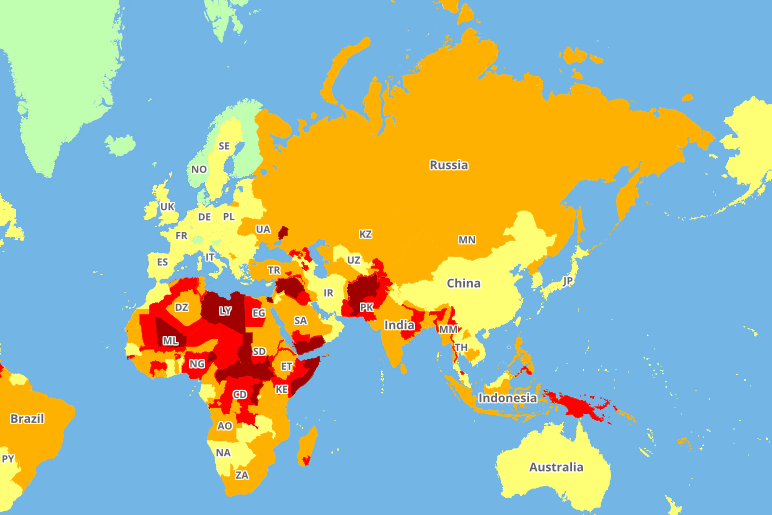Travel Risk Map 2019: Iran as safe as the UK and Slovenia, Denmark and Switzerland among world's least dangerous countries
An interactive map shows the relative risk of travelling to every country in the world
Your support helps us to tell the story
From reproductive rights to climate change to Big Tech, The Independent is on the ground when the story is developing. Whether it's investigating the financials of Elon Musk's pro-Trump PAC or producing our latest documentary, 'The A Word', which shines a light on the American women fighting for reproductive rights, we know how important it is to parse out the facts from the messaging.
At such a critical moment in US history, we need reporters on the ground. Your donation allows us to keep sending journalists to speak to both sides of the story.
The Independent is trusted by Americans across the entire political spectrum. And unlike many other quality news outlets, we choose not to lock Americans out of our reporting and analysis with paywalls. We believe quality journalism should be available to everyone, paid for by those who can afford it.
Your support makes all the difference.Iran is as safe as the UK when it comes to security, according to a new interactive map showing the risk level around the world.
The 2019 Travel Risk Map, launched by global risk experts International SOS in collaboration with Control Risks, shows the danger level in each country and territory based on the current threat posed to travellers by political violence (including terrorism, insurgency, politically motivated unrest and war), social unrest (including sectarian, communal and ethnic violence) and violent and petty crime.
Factors such as the robustness of the transport infrastructure, the state of industrial relations, the effectiveness of the security and emergency services and the country’s susceptibility to natural disasters are also taken into consideration.
The map lists five categories of risk: insignificant, low, medium, high and extreme.
Very few countries manage to make it into the “insignificant” bracket; in Europe, only Luxembourg, Denmark, Slovenia, Switzerland, Norway, Finland, Iceland and Greenland are put in this category.
The majority of European countries are deemed low risk, including the UK; as are Iran, Jordan, Oman, Qatar, the UAE, Kuwait, Georgia, Azerbaijan, Armenia and Uzbekistan in the Middle East.
Canada, the US, Australia and New Zealand are all low risk too.
“Extreme” risk countries are almost exclusively in Africa and the Middle East, including Syria, Yemen, Afghanistan, Libya, South Sudan and Somalia.

The map was released in conjunction with the Ipsos MORI Business Resilience Trends Watch 2019 report. The latter shows that a significant number of business decision-makers – 43 per cent – expect travel risks to rise in 2019.
Although some 47 per cent think risks have increased over the past year, this represents a 16 per cent decrease from 2017, when 63 per cent said risk had increased.
Alongside the Travel Risk Map, a Medical Risk Map and Road Safety Risk Map for 2019 have been launched.
The medical ratings are given by assessing a range of health risks and mitigating factors, including: infectious diseases, environmental factors, the standard and availability of local emergency medical and dental care, access to quality pharmaceutical supplies, the requirement for medical evacuation and cultural, language or administrative barriers.
The UK, along with most of Western and Central Europe, is designated “low” risk status.
Highest security risk countries
- Syria
- Yemen
- Afghanistan
- Iraq
- Libya
- Mali
- Central African Republic
- South Sudan
- Somalia
- The Gaza Strip
- Part of Egypt
- Part of eastern Nigeria
- Part of eastern Ukraine
Lowest security risk countries
- Luxembourg
- Switzerland
- Slovenia
- Norway (including Svalbard)
- Denmark (including the Faroe Islands)
- Finland
- Greenland
- Iceland
- Seychelles
- Cape Verde

Join our commenting forum
Join thought-provoking conversations, follow other Independent readers and see their replies
Comments